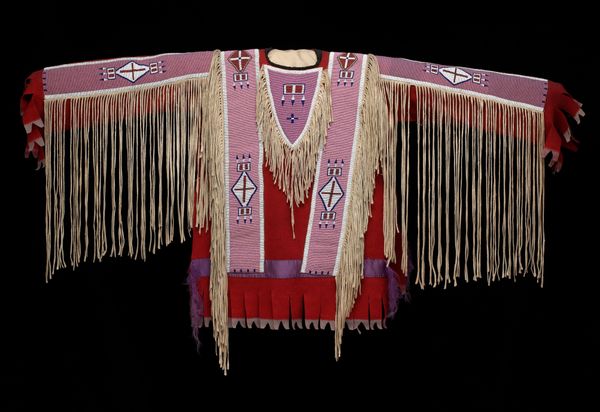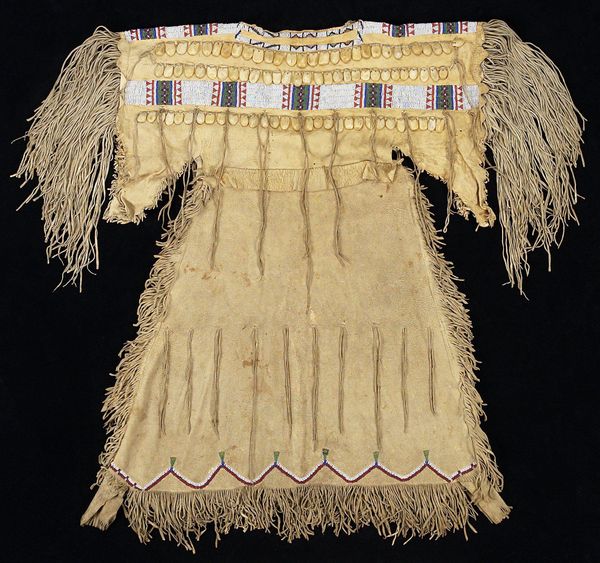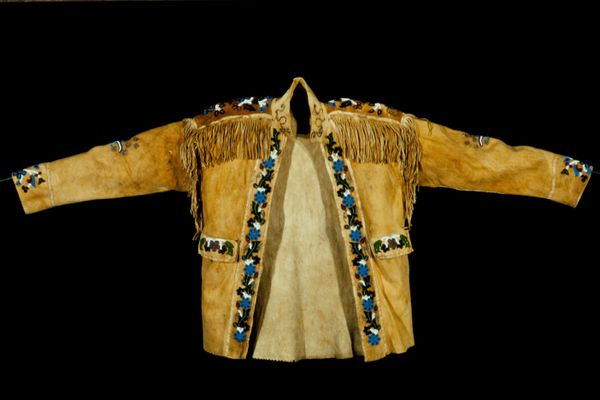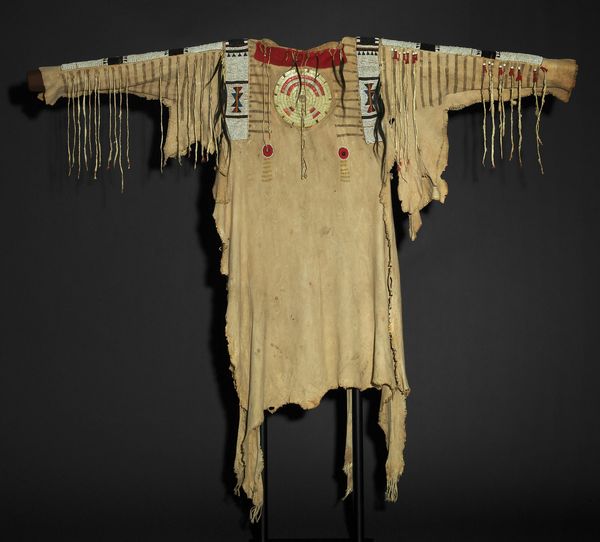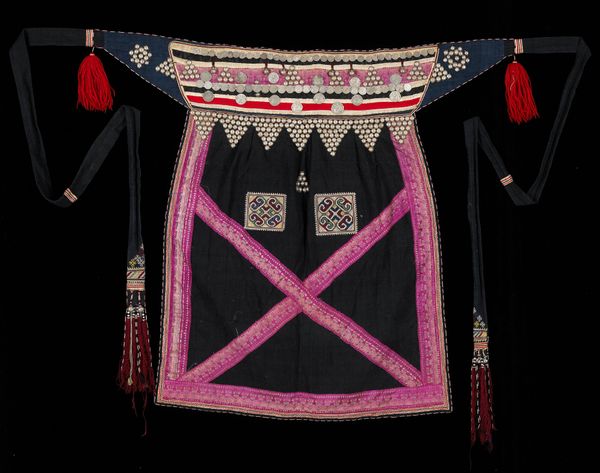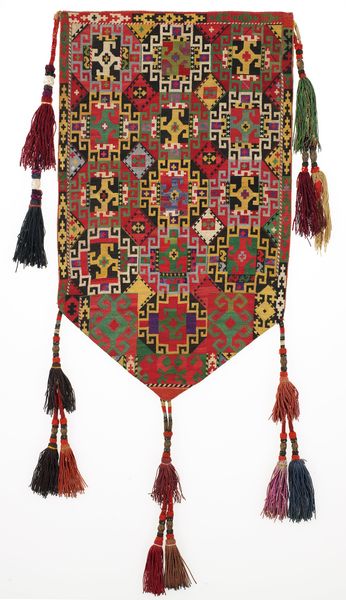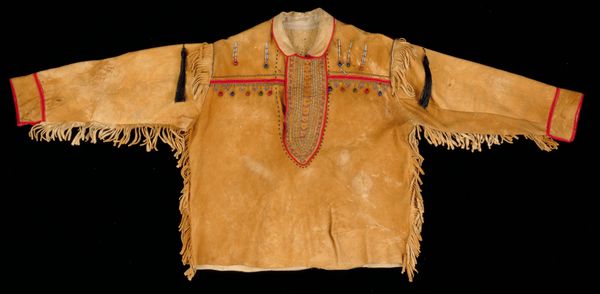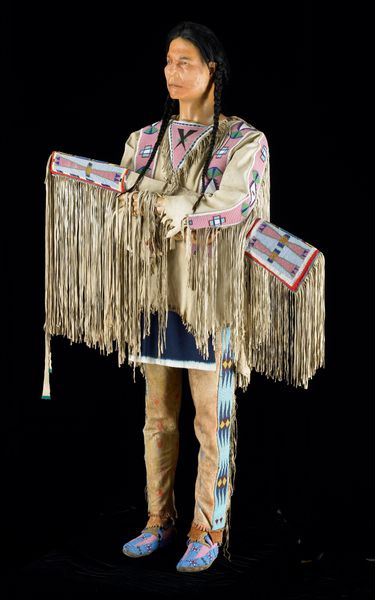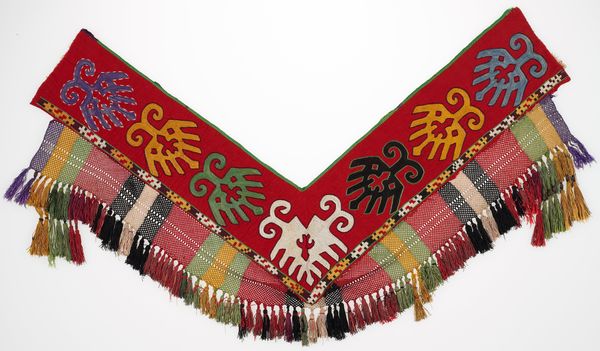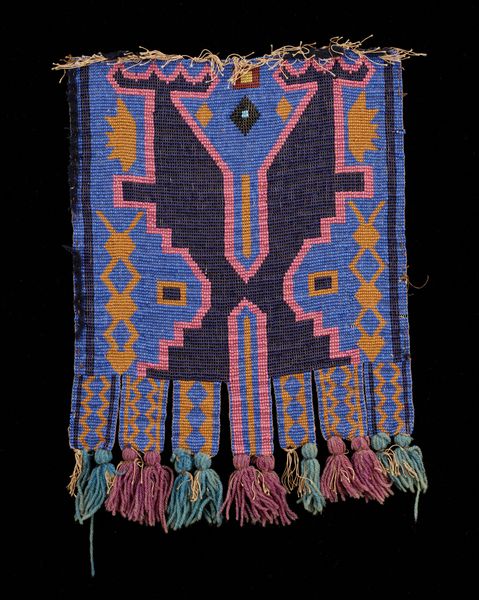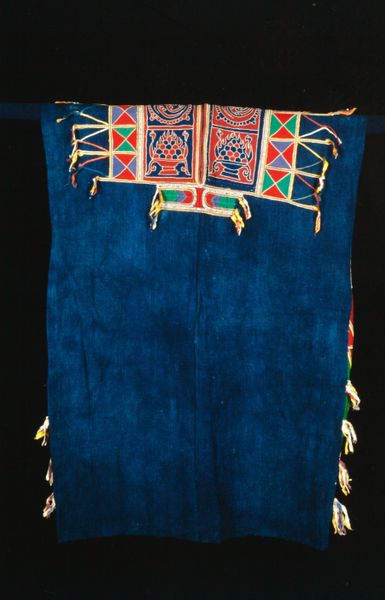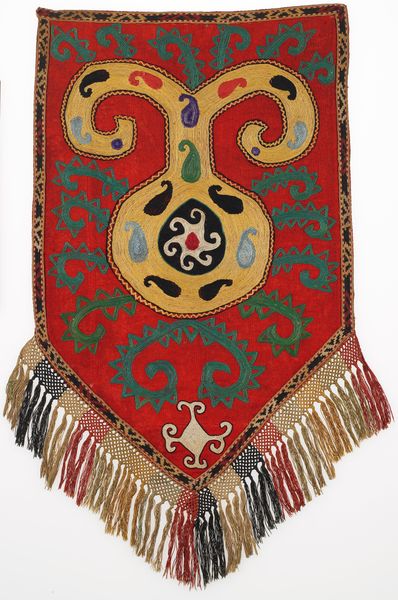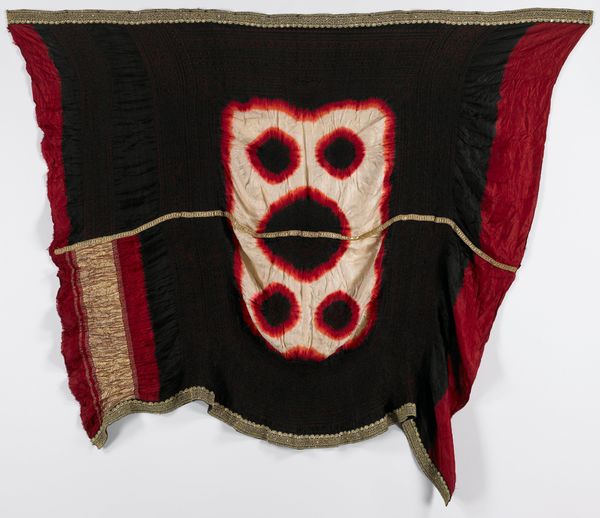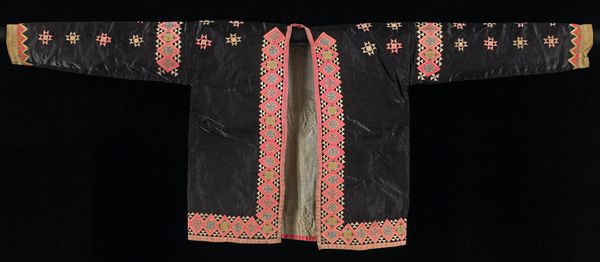
fibre-art, textile
#
fibre-art
#
textile
#
fashion and textile design
#
textile design
#
beaded
#
decorative-art
#
indigenous-americas
Dimensions: 28-1/4 x 62 in. (71.8 x 157.5 cm)
Copyright: Public Domain
Editor: So, here we have a shirt created around 1890 by an artist from the A’aninin (Gros Ventre) tribe. It’s currently housed in the Minneapolis Institute of Art, and is made of wool and adorned with beadwork and fibre art weaving. Honestly, the first thing that strikes me is how visually striking and elaborate it is. All of the lines, textures, and colors seem purposeful. What stands out to you in this piece? Curator: You know, when I look at something like this, I’m immediately transported. Can you imagine the time and dedication poured into each bead, each woven strand? The geometric patterns are beautiful. But for me it evokes stories and tradition—each piece acting as a prayer or carrying of the culture. Have you considered that clothing isn't always about keeping warm, or about fashion as we consider it? Editor: Definitely, I was wondering about the symbolism within the geometric shapes and if specific colours carry certain significance. Are those details known? Curator: It’s tempting to look for direct translations, isn’t it? To unlock a hidden language. What I've learned is this artwork really encourages one to delve into cultural sensitivity. Instead of demanding specific explanations, perhaps allow ourselves to appreciate the dedication it stands for as an incredible artifact. Editor: That makes a lot of sense. I'm guilty of always searching for concrete meaning instead of letting the piece communicate in a broader way. Curator: That's an easy trap. Thinking of the shirt this way reminds us that it's alive, whispering narratives of heritage and resilience. We might consider that rather than answers, what this offers is an invitation. Editor: Wow, I never would have thought about it like that! Thank you for offering this insightful perspective. Curator: The pleasure is all mine. Let us continue.
Comments
minneapolisinstituteofart about 2 years ago
⋮
Decorated shirts were worn on the Plains by men who were highly regarded within their community. Created by women, this honor garment was a prestige item that represented the accomplishments of the owner. Over time a shirt can get damaged through use, and the beaded strips could be transferred to a newly created one, such as on this example. The body of this shirt is made of wool trade cloth that was created in Europe. The artist cleverly cut the undyed portion of this garment in order to have a two-color fringe, adding to the overall aesthetic effect.
Join the conversation
Join millions of artists and users on Artera today and experience the ultimate creative platform.
